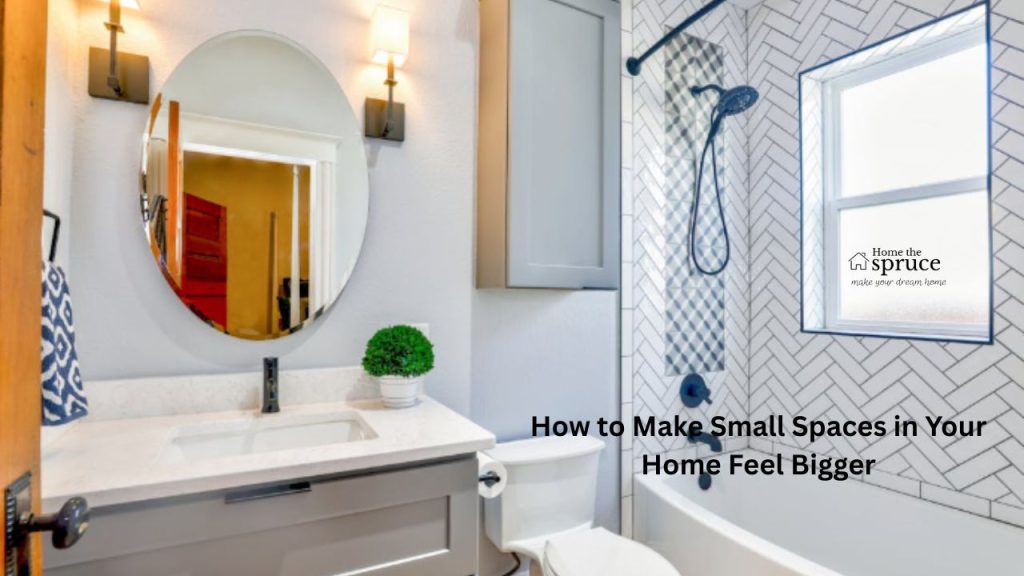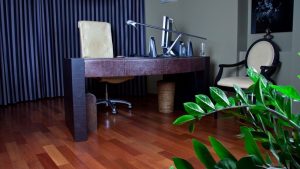Let’s be honest—houses are shrinking in size. The average single-family home size in the United States has gotten smaller than ever. Whether it’s a change in lifestyle, tighter budget, or simply the way the market has landed now, many people are dwelling in less square footage than they anticipated.

So if it feels like your rooms have gotten uncomfortably tight, you aren’t alone. The good news? There are, believe it or not, some really simple, low-stress ways to make your space feel way more spacious than it actually is — no knocking down walls or spending a small fortune required.
Let’s get into some simple tips that can help a tiny home feel open, airy and entirely livable.
Think About Small Remodeling Changes
Okay, so if you do want to go a step further and make a more permanent change, you don’t need to renovate your entire home. Even a tiny remodel can make a very big difference—especially in places like bathrooms, where every inch counts.
Small updates can include:
- Swapping out bulky vanities for floating ones
- Installing built-in shelves
- Replacing old tiles or light fixtures
These tweaks don’t just make the room feel nicer—they free up space. And if you’re not sure what would help the most, it might be worth talking to bathroom remodelers. They’ve seen it all and can help you get the best use out of a small layout.
Use Light and Neutral Colors
When it comes to space, color plays an important role. Light colors can work wonders and make a room seem bright, clean, and open. So if your walls are dark or bold, it might be part of the reason your space feels kind of boxed in.
Go for colors like:
- Soft whites
- Light beiges
- Pale grays
- Muted pastels
You don’t need to be limited to just white — just avoid dark, heavy colors in tiny rooms. Use the same family of light colors for your walls, furniture, rugs and curtains so everything will flow and not feel like it’s visually “cutting” the room.
Allow in as Much Natural Light as Possible
No really, natural light makes all the difference. If your space doesn’t have much light, you may feel like your home always looks a bit dreary. This can make a tiny room feel even tinier!
Some quick tips:
- Swap out heavy curtains for sheer ones or light roller shades.
- Avoid blocking windows with furniture.
- Keep windows clean.
If your place doesn’t get much natural light to begin with, mirrors are your best friend—and we’ll talk more about that next.
Use Mirrors Wisely
A well-placed mirror can double the amount of light that enters your room. It also gives the illusion of more depth, which tricks your brain into thinking a room is bigger than it actually is. Here’s how to use them right:
- Put a mirror across from a window to reflect the light.
- Hang a large mirror over a console table or fireplace.
- Use mirrored furniture to add a reflective touch.
One or two big mirrors used thoughtfully can really open up a tight space.
Go vertical, not horizontal
The ground needs to be as open as possible. It sounds simple, but it makes a world of difference. Oversized cabinets, floor lamps, and lengthy bookshelves can devour your valuable space and cause everything to feel crammed together.
Try this instead:
- Place wall-mounted shelves desks, beds, or toilets
- Have suspended nightstands or vanities
- Opt for floating centers of entertainment
The more you lift things off the floor, the airier the room will feel. It also looks cleaner and more modern.
Make Your Layout Make Sense
Poorly planned layouts have no place in small rooms. If your furniture is crammed into odd areas or blocking pathways, it’s not only inconvenient, it makes the entire space feel cramped.
Here’s what helps:
- Paths need to be open so you can walk through without hitting things.
- Limit the number of pieces in any one area.
- You can also float furniture away from the walls a bit (this somehow makes things feel larger).
You don’t need to leave huge gaps, but being able to walk where you want to makes your space feel far less cluttered.
Adopt Multi-Purpose Furniture
When space is limited, it’s smart to shop at FactoryFast for versatile furniture pieces that serve more than one purpose—like storage beds, extendable tables, or fold-out desks that help you make the most of every square foot.
Great examples include:
- Ottomans with hidden storage
- Coffee tables that act as desks
- Beds with drawers underneath them
These are the types of things that help ensure that your stuff stays out of your view without using up more space. More space definitely equals less clutter.
Keep It Clean and Minimal
This one’s kind of a no-brainer, but worth mentioning nonetheless — mess makes a small space feel smaller. It’s easy for clutter to accumulate, and soon enough, you’re weaving around laundry baskets and stepping over cords.
Here are some things that can help:
- Limit decorating surfaces to one or two items
- Tuck away cords and chargers whenever possible
- Bins or baskets keep things organized
- Donate or store things you don’t frequently use
Don’t attempt to pack every nook. Negative space is a good thing; it makes everything else pop.
Here’s the thing — small homes don’t have to feel small. By making a little effort and making some good design choices, you can completely transform the look of your space. Light hues, natural light, clear pathways and smart storage go a long way.
You don’t have to spend a small fortune or tear down walls to open up your house and make it feel more comfortable. Some minor adjustments can stunningly transform how rooms look and feel.








